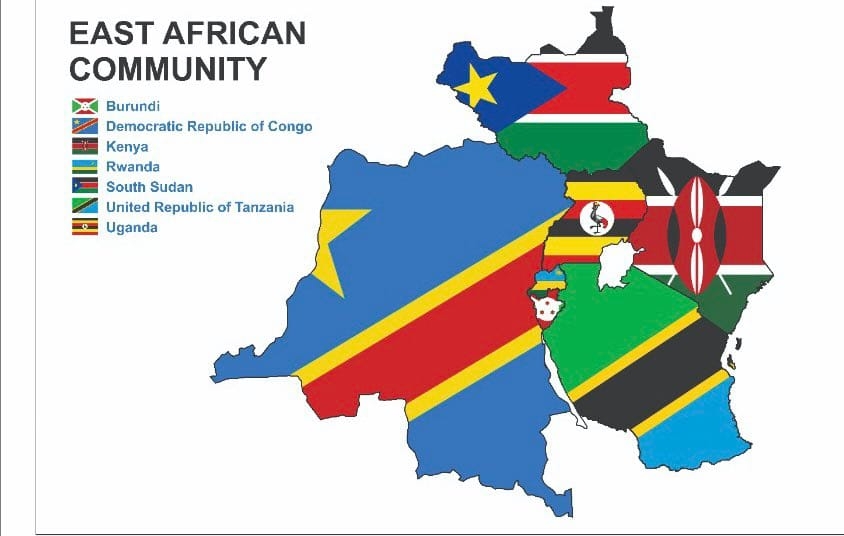Kenyans are exposed to heavily polluted air that is four times the guidelines given by the World Health Organization.
This is according to the latest Unep Pollution Action Note which shows the global state of air pollution, major sources, the impact on human health and national efforts to tackle the critical issue.
“In Kenya, people are exposed to an average of 22 µg/m3 a year- 4.4 times the WHO guidelines,” the action note says.
Unep says people suck in tiny particles that can damage lungs, hearts, and brains and cause a host of other health problems every time they breathe.
The most dangerous of these particles, which can include anything from soot, soil dust, to sulfates, are fine particles 2.5 microns or less in diameter —shortened as PM2.5.
In 2021, in response to increases in quality and quantity of evidence of air pollution impacts, the WHO updated the PM2.5 annual mean air quality guideline to 5µg/m3, which represents clean air as few impacts have been observed below these levels.
The update halves the previous 2005 guideline level of 10µg/m3.
UNEP says even though the challenge is global, those living in developing countries and the most vulnerable such as women, children and the elderly remain the most affected.
Globally, air pollution is estimated to kill seven million people.
Unep says the deadliest illnesses linked to PM2.5 air pollution are stroke, heart disease, lung disease, lower respiratory diseases (such as pneumonia), and cancer.
High levels of fine particles also contribute to other illnesses, like diabetes, can hinder cognitive development in children and cause mental health problems.
The World Health Organization says approximately 19,000 people die each year in Kenya due to air pollution.
The United Nations Environment Programme cites 70 per cent pollution levels in Nairobi.
The Economic Survey Report 2022 indicates increasing cases of diseases of the respiratory system largely associated with air pollution.
The survey shows that cases handled in 2020 were 16, 562, 227 while in 2021; reported cases were 20,613,455 indicating an increase by 21.9 per cent.
Unep says residential pollution, mostly from cooking and heating using biomass, and generating electricity from fossil fuels for homes, and transport are the main human-made sources of fine particles.
Reliance on wood also increases air pollution in developing countries.
Efforts are however being put in place to enhance the uptake of clean cooking systems in the country.
Another source of air pollution in countries such as Kenya is the transport sector.
The Transport Sector Climate Change Annual Report, 2018/2019 showed that the transport sector accounted for about 12 per cent of Kenya’s total greenhouse gas emissions, which amounts to 11.25 Million tonnes of Carbon Dioxide Equivalent (MtCO2e) as at 2015.
The transport ministry the sector is heavily responsible for emissions of harmful pollutants that contribute to public health issues in cities, including 61 percent of nitrogen oxide pollution and 39 percent of harmful fine particulates.
In addition, transport is responsible for 20 percent of CO2 emissions in Kenya.
Kenya's Nationally Determined Contribution is seeking to reduce emissions by 32 per cent by 2030.
Agriculture, energy, manufacturing, transport, waste and forestry are some of the sectors the government intends to use to curb emissions.
In the transport sector, the state aim to reduce 3.46 MtCO2e against the Business as Usual (BAU) by adopting a sustainable and low carbon mobility pathway.
An analysis by the transport ministry shows an increased uptake of electric mobility.
Already, there are 20 electric buses and over 1,500 electric motorcycles on the road in Kenya.
The state is also in the process of rolling out Bus Rapid Transit in Nairobi with a view of halting decongestion and emission as the buses that will be used are electric.
The transport ministry has also established a National Electric Mobility Task Force to develop a national electric mobility policy to guide the e-mobility sector.
The National Environment Management Authority is at the same time tightening the noose on polluters through strengthened regulations.
The Environmental Management and Coordination (Air Quality) Regulations, 2023 has been undergoing public participation.
“Every operator or owner of a mobile emission source including road, rail, air, marine and inland water transport and conveyance equipment, shall control the emission of priority air pollutants,” part of the draft regulations says.
The new regulations come even as studies show that air pollution is increasing in Kenya and is contributing to health-related complications and premature deaths.
The Air Quality Regulations among other interventions provide for control of emissions from mobile sources such as vehicles, aircraft, ships and trains.
It requires commercial vehicles to undergo annual emission testing while private vehicles undergo biennial emission testing.
Nema says the objective of the regulations is to provide for prevention, control and abatement of air pollution to ensure clean and healthy ambient air.
Article 42 of the Constitution 2010 says every person has the right to a clean and healthy environment, which includes the right to have the environment protected for the benefit of present and future generations through legislative and other measures.
The new regulations establish emission standards for various sources such as motor vehicles and stationary (industries).
It also covers any other air pollution source as may be determined by the Environment CS in consultation with Nema.
The regulations have set emission limits for various areas and facilities.
The new regulations seek to revoke the Environmental Management and Coordination (Air Quality) Regulations, of 2014.
They also provide for designating controlled areas, and the objectives of air quality management plans for these areas.
Some of the priority pollutants include Carbon monoxide, Carbon dioxide, Nitrogen Oxides, Sulphur Oxides, Hydrocarbons, Particulate Matter, Volatile Organic Compounds and Methane.
“No person shall cause or allow the emission of visible air pollutants from a stationary vehicle, tri-cycle, motorcycle or any other internal combustion engine, in excess of the limits set out under the Kenya Standard KS EAS 1047,” part of the regulations says.
Under the new regulations, all commercial and public service vehicles will undergo emission tests annually.
All private vehicles over five years old undergo emission tests once every two years.
“Trans-boundary movement of public and private vehicles shall adhere to these regulations.”
The regulations say every vehicle owner or operator shall ensure their vehicles undergo emission testing at centres designated by the authority.
All vessels shall undergo emission testing as stipulated under the International Convention for the Prevention of Pollution from Ships (MARPOL) while all aircraft will undergo emissions testing as stipulated under the International Civil Aviation Organization.
The regulations say all locomotives will also undergo emissions testing.
Nema will designate qualified emission testing centres to undertake emission testing on behalf of the Authority.
“The designation of an emission testing centre shall be made upon an application to be submitted to the Authority.”
The Authority may at any time order emission testing of internal combustion engines releasing visible exhaust emissions, including but not limited to motor vehicles.
















